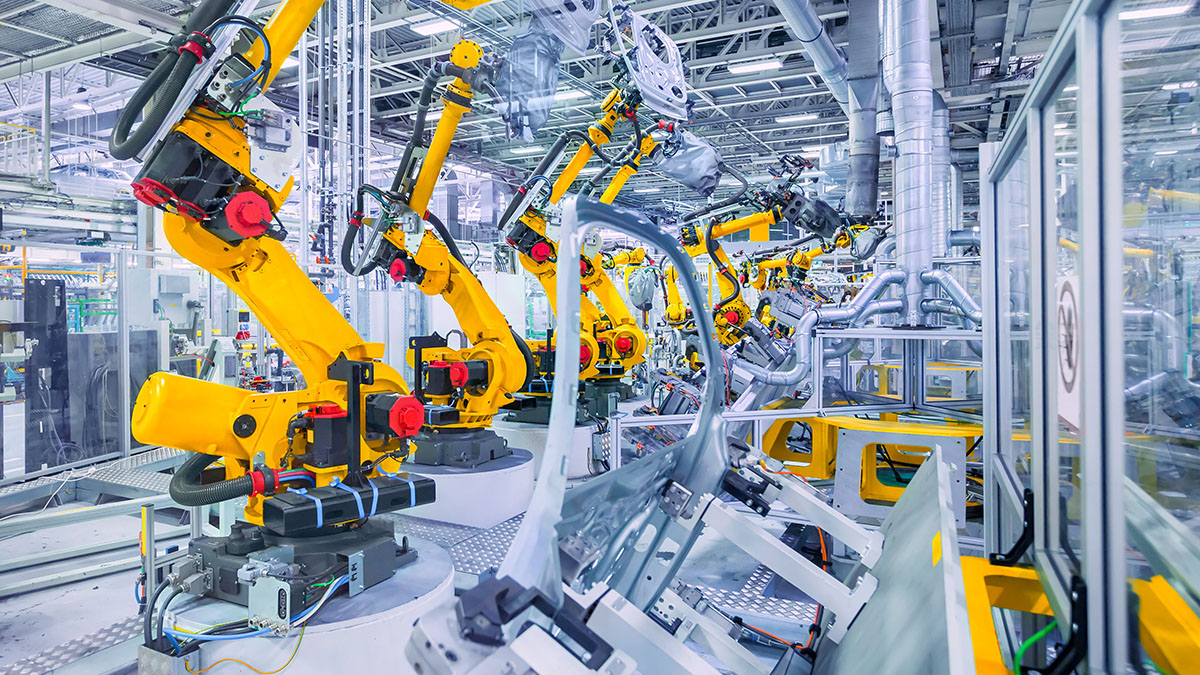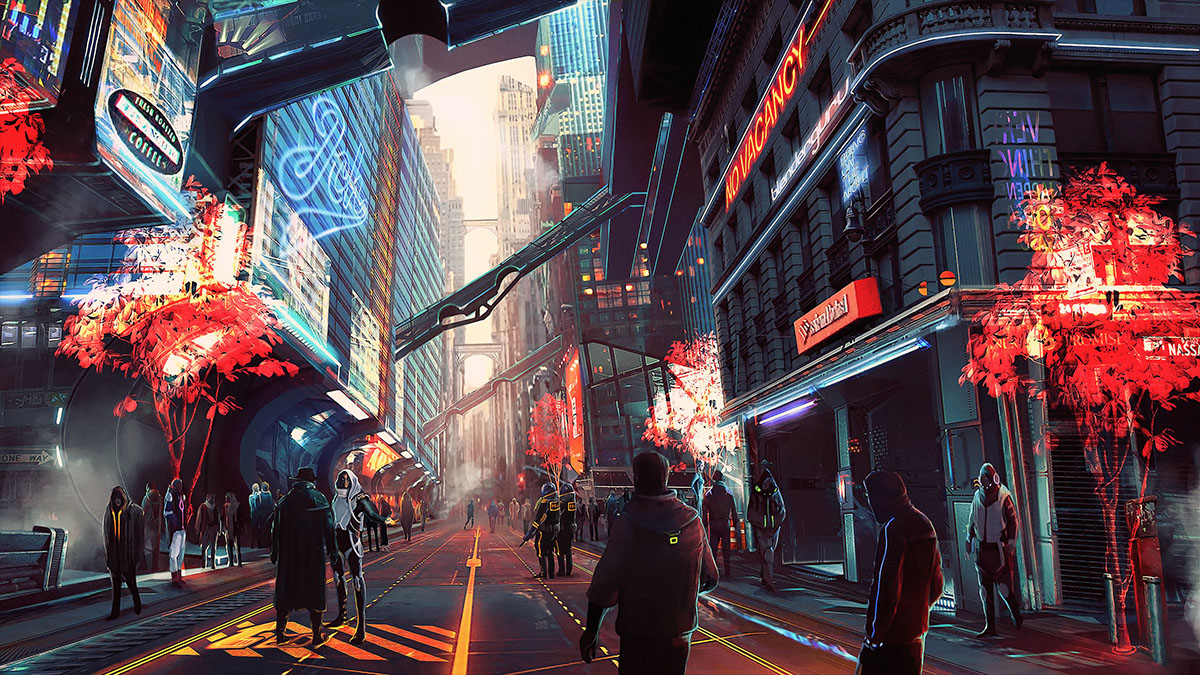At first, the term gig economy seemed innocuous, especially in the aftermath of the Great Recession when millions were scrambling for any work they could find and companies were not hiring for very understandable reasons. Suddenly, you could download an app and make a few dollars when you desperately needed to pay your bills. It was an okay way to get by. But as the economy recovered, companies still weren’t hiring. They were automating. Although that’s not exactly true. After cutting staff to skeleton crews and investing in trillions of lines of code, many companies had new openings, but apparently no one to fill them.
Right now, more than 7 million jobs are said to be unfilled, but paradoxically, the employers supposedly looking for all those workers refuse to invest in training new hires or raise wages to attract top talent in any meaningful way. Technically speaking, wages have nudged upwards this year, but only by 0.6% when adjusted for inflation. As interest rates rise and a trade war with China continues and the specter of trade conflicts with Canada, and the EU loom, a spasm of inflation and reduced job growth could well wipe out those gains next quarter. Overall, the typical American worker hasn’t gotten an inflation-adjusted raise in nearly 40 years now.
As people are falling further and further behind, they’re often turning to gigs to make up for what they’ve lost to inflation, software, and other financial setbacks, gigs provided by giant, Silicon Valley venture-backed companies which treat every worker as a freelancer, provide no benefits or security, and whose revenue-generating potential goes only as far as the next task requested by an algorithm. In a way, this is nothing new. If anything, a steady 9-to-5 job for 35 years with benefits and a pension is a historical aberration. Aside from the three generations that enjoyed this generous arrangement, the gig economy and workhouses, or something similar to them, were the norm.
The only thing that’s truly new is the array of algorithms that handle the logistics of assigning work and payment for their platforms. Using the glossy veneer of high tech, companies like Lyft, Uber, Postmates, and Fiverr pitch this as being one’s own boss with flexible hours, borrowing a technique from pyramid schemes — or multi-level marketing companies as they liked to be called now — and pretending that selling a simple service and handling your own healthcare, time off, taxes, and work-related expenses is much better than being a paid employee with set hours, an expense account, and actual benefits.
Just to make things more problematic, the gig economy combines the financial insecurity of running your own business and the stress of being tethered to an app that now has far too much control over your life with pull-yourself-up-by-your-bootstraps-by-working-yourself-to-death rhetoric that many pundits have condemned as the capitalist equivalent of the prosperity gospel. Sure you may be struggling, sure you may be working all the time, sure you might be living paycheck to paycheck, task to task, but one day it will surely be worth it. Somehow. Just don’t question it. That’s how it works. Now keep accepting those rides and earning rave reviews or we’ll kick you off the platform because you’re ultimately just one of the literally hundreds of thousands of cogs in our machine.

One of the most important things to recognize when we talk about the gig economy is that it’s an almost inevitable outcome of aggressive automation with absolutely no consideration as to what will happen to the people who will be displaced. It may be tempting to look at automation and the economy as zero-sum games, but they’re not. Handing off routine, cognitively untaxing work to machines that can do it exponentially faster and far more accurately than humans doesn’t mean there’s no longer any use for workers. If anything, it opens up new career options. And this is in part why after decades of aggressive automation there are quite literally more jobs than people looking for work in America right now.
Unfortunately, while the new jobs are out there, the training to make sure workers can do them is completely absent. When you consider the number of job openings and the fact that only a little over a quarter of all Americans are doing jobs that require their degree if they demand any degree whatsoever, the college system, the dismal state of colleges, and the depressing outcomes of today’s college grads, it couldn’t be more blatantly obvious that we’re suffering from a massive skills mismatch to which we added the poisonous load of education debt. And it’s little wonder this sad state of affairs that our leaders refuse to even pretend to tackle with anything more than lip service is fueling populism and public anger.
If all this sounds familiar, especially to long time readers, it’s because we’ve touched on all this before and experts have been sounding the alarms about this exact outcome for quite literally a decade just to be met with blank, slack-jawed stares from politicians in the post-industrial world. The only country even seriously thinking of solutions right now is Canada. Meanwhile, south of its border, the Trump administration seems unable to comprehend that automation is even happening, much less that it’s accelerating and could easily have profound effects on even the most rural agricultural communities in the foreseeable future which industrialization seemingly automated as much as it could.
With no qualifications to take on post-automation jobs, tall barriers to training, and the varied and questionable quality of said training, the only thing left after another round of layoffs seems to be to download an app and run errands on customers’ demand. And this trend will continue because the software taking people’s jobs is becoming more sophisticated and accessible at an accelerating pace. This is more or less the same arrangement as pre-industrial times, when the average worker relied on a stream of casual jobs to make ends meet and financial security was found primarily in guilds and the clergy.
So, in a way, pundits and critics who compare the gig economy to serfdom with a smartphone aren’t entirely off the mark, despite venture capitalists growling about socialism in a way eerily similar to that of robber barons of the early 20th century while building their iterations of workhouses and running what we’d now call sweatshops. According to futurists who saw the potential for the technology we have today, the opposite was supposed to happen. We were meant to be working less and have more financial security precisely because all the busy work and tedious assembly would be done by computers and robots. And yet, because we disregarded the humans, we’re working more than ever with less and less to show for it.
This is especially true in the United States, where wealth and income inequality has become truly mind-boggling, so much so, the old political tenet that Americans vote with their wallets looks like it no longer applies. These wild disconnects, often the result of numerous supply side economics policies, essentially assume that everything will work itself out if we just allow the corporate world to set the right incentives. Unfortunately, in practice this means that instead of creating and following a vision of where we’re headed as a country, we’re scrambling to catch up with quarterly and annual goals of companies with wildly different priorities, needs, and ideas based on their investors’ and owners’ demands.

Now, at this point you may be wondering if I’m about to propose a five year plan and the answer is no. Categorically and absolutely no. A far better solution is to abandon supply side economics of which the gig economy is the ultimate manifestation. Instead of waiting for companies to set priorities for education and allow them to expect that schools and post-secondary institutions will scramble to fulfil their ever-changing whims to turn out pre-trained employees, we have to set real goals for ourselves to fight the real scourges of the 21st century: antibiotic resistance, climate change and pollution, runaway automation, and cyberwarfare. We also need to invest in our future in space because that’s our species only plausible Plan B if things go horribly wrong.
In short, instead of letting corporations and billionaires what our needs should be — which, if you can believe it, tend to have something to do with making them even richer and more profitable ten times out of ten — then bowing to their whims, we need to tell them what they can do for us and how they can get rich fulfilling our visions. They will need well-rounded, healthy workers given curiosity-driven educations emphasizing critical thinking and discovery to fill the millions of vacancies they currently have the millions more they’ll have to fill. They will need a sustainable, clean infrastructure to pull it off.
But most importantly, they will need to compete for the grants and tax incentives awarded for proven, innovative solutions to the problems society wants solved. Governments, especially ones aided by and streamlined with AI and state of the art technology, are great at providing routine services and basic healthcare contrary to the mantra of American conservatives that there isn’t a single thing governments do well except for waging war. They can make sure their people are healthy, secure, and educated. Meanwhile, companies whose job is to innovate can deliver solutions to problems governments and their citizens will encounter.
Gigs and freelance, part time assignments, like the ones which account for much of America’s and Canada’s employment growth since the Great Recession, will be far less necessary in a world of drones, urban hubs designed or retrofitted for ease of getting from point A to point B, and long term projects driven by long term visions and planning. And perhaps most importantly, the future of work will not be four year colleges for professions other than scientific, medical, or engineering-related. It will be based around trade schools and apprenticeships, in which highly skilled tradespeople team up with robots and computers to build, maintain, and repair ever more sophisticated and networked infrastructure.
Ultimately, no matter how far into the future we get, we’ll still be building things and making sure they’re running, be they plumbing in a domicile on Earth or hydroponics in a Martian outpost. We might need to use virtuality reality or a swarm of robots to help us do it. We might oversee autonomous drones and bots doing preliminary diagnostics and jumping in remotely to make the necessary fixes. We might streamline the work with secure Internet of Things devices. But in the end, skilled tradespeople will be using and fixing devices built by engineers, based on the work of scientists.
Looking at the same calculus and factoring in potential educational debt, it’s no wonder more teenagers have their eyes on trades rather than the ranks of middle management and paper pushers bursting at the seams and due for obsolescence when AI running on memory chips and trained on quantum computers takes over for them. Some experts looking at long term trends agree, pointing out the underinvestment in trade schools, soaring demand for tradespeople, the value of experience above all else in the workforce today, and factoring the hobbling effects of student debt on future earnings and financial mobility.
When the gig economy became the fastest growing sector of employment, it should’ve raised a massive red flag and prompted a comprehensive reconsideration of where we were headed and why. But instead of treating it like the major warning sign, we once again sang the praises of the venture capitalists who dusted off an old concept, recruited some programmers to digitize the logistics, and sold it like MLM-style financial snake oil, and now wonder why financial security and stability hasn’t improved across the board thanks to all those gigs.
We’ve run out of time to allow great minds to chase small ideas. We need to literally reach for the stars and catch up to the future. The decades of spinning our wheels yes sliding backwards like Looney Tunes cartoon characters, so much so that far right populism is regaining a foothold in global politics, are proof that unless we finally start thinking big, we’ll continue backsliding with disastrous consequences for ourselves and the world we inhabit.






